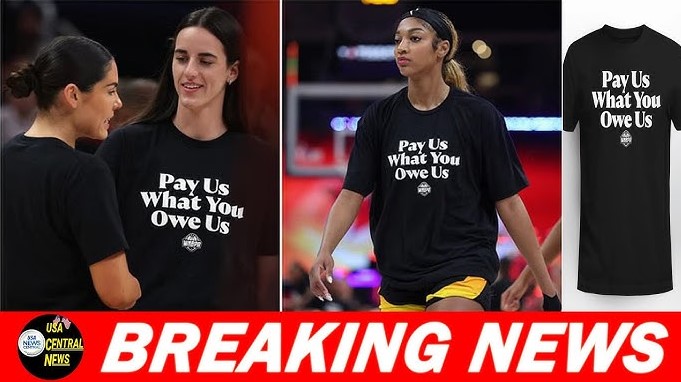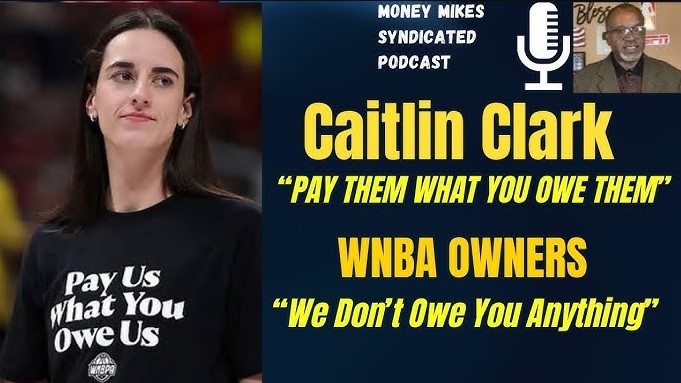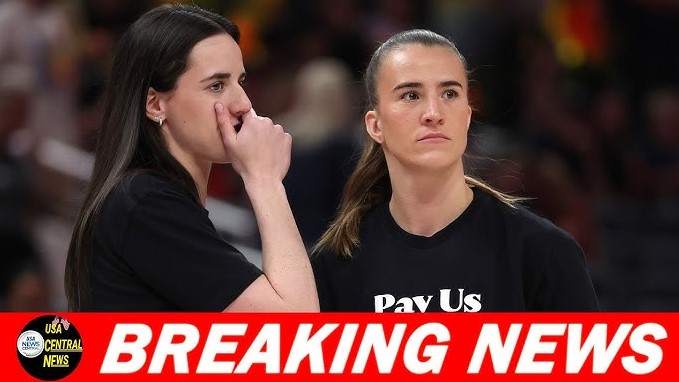Caitlin Clark’s Pay Revolution: The WNBA’s Moment of Reckoning
The basketball world witnessed a defining moment on Saturday as Indiana Fever sensation Caitlin Clark boldly called for better compensation across the WNBA, her voice cutting through the celebratory atmosphere of the All-Star Game with the precision of her signature three-pointers. While thousands of devoted fans draped in “Clark” jerseys transformed the Gainbridge Fieldhouse into a sea of support for the wildly popular rookie, the 22-year-old phenom was conspicuously absent from the court due to a groin injury that had sidelined her earlier in the week.

The irony was impossible to ignore as Clark’s image dominated Indianapolis’s cityscape through massive Nike, Wilson, and Gatorade advertisements, her marketing value soaring to unprecedented heights while the fundamental question of player compensation remained frustratingly unresolved. Commissioner Cathy Engelbert’s optimistic statements about ongoing labor negotiations provided a backdrop of cautious hope, yet Clark’s public stance represented something far more significant than routine contract discussions—it embodied a generational shift in how female athletes approach their worth in professional sports.
The sold-out arena served as a powerful testament to Clark’s transformative impact on women’s basketball, with her absence paradoxically amplifying her presence as fans continued to celebrate a player who has redefined what it means to be a rookie sensation in professional sports. Her injury may have kept her from showcasing her extraordinary court vision and deadly shooting range, but her advocacy for fair compensation demonstrated that her influence extends far beyond statistical achievements and highlight-reel performances.
Clark’s emergence as both a basketball virtuoso and vocal advocate for player rights represents a seismic shift in the traditionally conservative landscape of professional women’s sports, where previous generations often felt compelled to remain silent about financial disparities. The rookie’s willingness to challenge the status quo while simultaneously delivering record-breaking performances and television ratings creates an unprecedented leverage point in labor negotiations that could reshape the entire economic structure of the WNBA.

The juxtaposition between Clark’s massive commercial appeal—evidenced by her omnipresent advertising campaigns throughout Indianapolis—and the ongoing discussions about player salaries highlights a fundamental disconnect that has plagued women’s professional sports for decades. While her face graced billboards and her jersey sales shattered records, the broader conversation about compensating female athletes commensurate with their entertainment value and revenue generation gained urgency through her bold advocacy.
Commissioner Engelbert’s expressed optimism about recent labor talks suggests that Clark’s timing may be strategically perfect, as the league appears more receptive to addressing compensation concerns than in previous negotiating cycles. The convergence of Clark’s star power, unprecedented fan engagement, and favorable negotiating climate creates a unique opportunity to establish new precedents for how female professional athletes are valued and compensated.

The packed Gainbridge Fieldhouse, despite Clark’s physical absence, demonstrated that her impact transcends individual performances and has fundamentally altered the relationship between WNBA players and their fanbase. The sight of thousands wearing her jersey while she advocated for better pay created a powerful visual narrative about solidarity, support, and the evolving expectations of professional women’s basketball.
As labor negotiations intensify in the coming weeks, Clark’s public stance on compensation will likely serve as a catalyst for broader discussions about the economic sustainability and growth potential of women’s professional sports. Her unique position as both a transcendent talent and marketing phenomenon provides her with unprecedented influence in shaping not just her own career trajectory, but the financial landscape for an entire generation of female athletes who will follow in her footsteps.